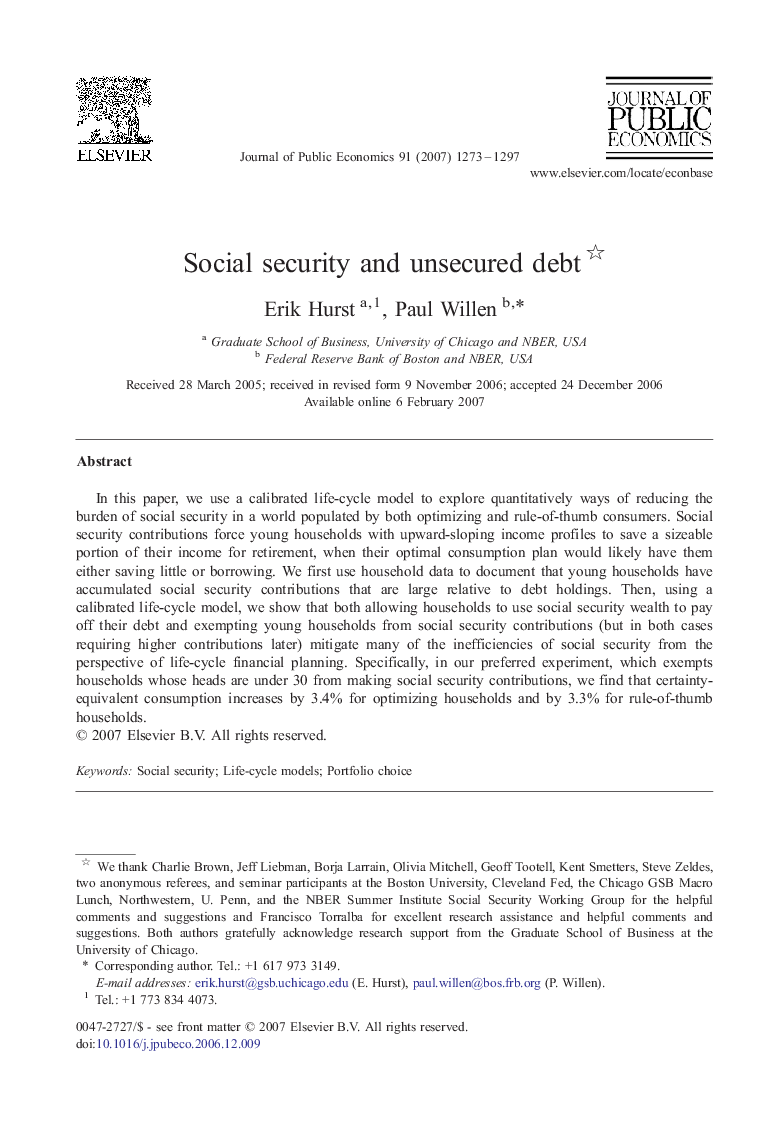| Article ID | Journal | Published Year | Pages | File Type |
|---|---|---|---|---|
| 969500 | Journal of Public Economics | 2007 | 25 Pages |
In this paper, we use a calibrated life-cycle model to explore quantitatively ways of reducing the burden of social security in a world populated by both optimizing and rule-of-thumb consumers. Social security contributions force young households with upward-sloping income profiles to save a sizeable portion of their income for retirement, when their optimal consumption plan would likely have them either saving little or borrowing. We first use household data to document that young households have accumulated social security contributions that are large relative to debt holdings. Then, using a calibrated life-cycle model, we show that both allowing households to use social security wealth to pay off their debt and exempting young households from social security contributions (but in both cases requiring higher contributions later) mitigate many of the inefficiencies of social security from the perspective of life-cycle financial planning. Specifically, in our preferred experiment, which exempts households whose heads are under 30 from making social security contributions, we find that certainty-equivalent consumption increases by 3.4% for optimizing households and by 3.3% for rule-of-thumb households.
